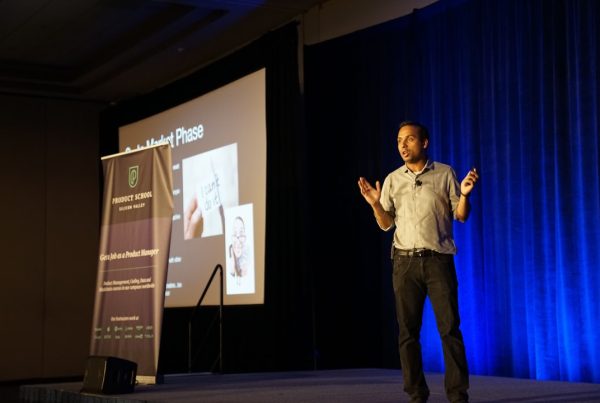In the ever-evolving landscape of cybersecurity, Advanced Persistent Threats (APTs) have emerged as a significant concern for organizations across various sectors. These threats are characterized by their sophisticated nature and the prolonged duration of their attacks. Unlike traditional cyber threats that may be opportunistic and short-lived, APTs are meticulously planned and executed, often involving multiple stages of infiltration, reconnaissance, and data exfiltration.
As you delve deeper into the world of APTs, it becomes clear that they represent a formidable challenge for cybersecurity professionals and organizations alike. APTs typically involve a well-resourced adversary, often state-sponsored or part of organized crime syndicates, who possess the technical expertise to exploit vulnerabilities in systems and networks. Their primary objective is not just to breach security but to maintain a long-term presence within the target environment.
This persistence allows them to gather sensitive information, disrupt operations, or even manipulate systems for strategic advantage. Understanding the nature of APTs is crucial for developing effective defense mechanisms and response strategies, as the stakes are incredibly high in terms of potential damage and loss.
Key Takeaways
- APTs are sophisticated and targeted cyber attacks that are designed to gain unauthorized access to a network and remain undetected for a long period of time.
- Notable APT examples in recent years include the WannaCry ransomware attack, the SolarWinds supply chain attack, and the NotPetya malware attack.
- APTs have been known to target government and military entities, aiming to steal sensitive information and disrupt operations.
- Critical infrastructure and utilities have also been targeted by APTs, posing a significant threat to public safety and national security.
- Financial and banking institutions are prime targets for APTs, as they hold valuable financial data and assets that can be exploited by cyber attackers.
- Healthcare and pharmaceutical companies have been increasingly targeted by APTs, seeking to steal valuable research and patient data.
- Technology and defense contractors are at risk of APTs due to their involvement in developing cutting-edge technologies and sensitive defense systems.
- In conclusion, the ongoing threat of APTs highlights the need for robust cybersecurity measures and constant vigilance to protect against these persistent and evolving cyber threats.
Notable APT Examples in Recent Years
Recent High-Profile APT Incidents
In recent years, several high-profile Advanced Persistent Threat (APT) incidents have highlighted the severity of this threat. One notable example is the SolarWinds attack, which came to light in late 2020. This sophisticated supply chain attack involved the compromise of the SolarWinds Orion software, widely used by government agencies and corporations alike.
The SolarWinds Attack: A Supply Chain Breach
By inserting malicious code into legitimate software updates, attackers were able to infiltrate numerous organizations, including U.S. government agencies and Fortune 500 companies. The scale and impact of this breach highlighted the vulnerabilities inherent in supply chain management and the need for heightened vigilance.
The Microsoft Exchange Server Hack: A Global Cybersecurity Threat
Another significant APT incident was the Microsoft Exchange Server hack, discovered in early 2021. This attack exploited vulnerabilities in Microsoft’s email server software, allowing attackers to gain access to email accounts and install malware on affected systems. The implications were vast, affecting thousands of organizations worldwide. The incident not only showcased the technical prowess of the attackers but also emphasized the importance of timely patch management and proactive cybersecurity measures.
APTs Targeting Government and Military Entities

Government and military entities are prime targets for APTs due to the sensitive nature of the information they handle. State-sponsored actors often seek to gain intelligence or disrupt operations by infiltrating these organizations. For instance, the Chinese APT group known as APT10 has been linked to numerous attacks on government agencies and defense contractors.
Their operations typically involve spear-phishing campaigns aimed at gaining initial access, followed by lateral movement within networks to gather classified information. The implications of such attacks can be far-reaching. When sensitive government data is compromised, it can lead to national security risks and undermine public trust in governmental institutions.
Moreover, military entities face unique challenges as they must protect not only their own data but also that of allied nations. As you consider the ramifications of APTs targeting government and military organizations, it becomes clear that robust cybersecurity measures are essential for safeguarding national interests.
APTs Targeting Critical Infrastructure and Utilities
| Year | Number of APTs | Targeted Sectors | Impact |
|---|---|---|---|
| 2018 | 15 | Energy, Water, Transportation | Disruption of services |
| 2019 | 20 | Power, Communication, Finance | Data theft and infrastructure damage |
| 2020 | 25 | Oil, Gas, Nuclear | System shutdown and financial loss |
Critical infrastructure sectors, including energy, water, and transportation, are increasingly under threat from APTs. These sectors are vital for the functioning of society, making them attractive targets for adversaries seeking to cause disruption or chaos. The 2021 Colonial Pipeline ransomware attack serves as a stark reminder of the vulnerabilities present in critical infrastructure.
By exploiting weaknesses in cybersecurity protocols, attackers were able to shut down a major fuel pipeline, leading to widespread fuel shortages across the Eastern United States. The consequences of such attacks extend beyond immediate operational disruptions; they can also have cascading effects on the economy and public safety. As you contemplate the potential fallout from APTs targeting critical infrastructure, it becomes evident that these threats necessitate a coordinated response from both government agencies and private sector stakeholders.
Enhanced collaboration and information sharing are crucial for developing effective strategies to mitigate risks and protect essential services.
APTs Targeting Financial and Banking Institutions
The financial sector is another prime target for APTs due to the lucrative nature of financial data and transactions. Cybercriminals often employ sophisticated techniques to infiltrate banking systems, steal sensitive information, or manipulate transactions for financial gain. One notable example is the 2016 Bangladesh Bank heist, where attackers exploited vulnerabilities in the SWIFT banking system to steal $81 million.
This incident not only highlighted the vulnerabilities within financial institutions but also raised questions about the security of global banking systems. As you consider the implications of APTs on financial institutions, it becomes clear that these attacks can have far-reaching consequences for both individual customers and the broader economy. The loss of customer trust can lead to significant reputational damage for banks, while regulatory scrutiny may increase in response to high-profile breaches.
Therefore, financial institutions must prioritize cybersecurity investments and adopt a proactive approach to threat detection and response.
APTs Targeting Healthcare and Pharmaceutical Companies

The Growing Threat of APTs in Healthcare
The healthcare sector has become an increasingly attractive target for Advanced Persistent Threats (APTs), particularly during times of crisis such as the COVID-19 pandemic. Cybercriminals have sought to exploit vulnerabilities in healthcare systems to gain access to sensitive patient data or disrupt operations.
Real-World Examples of APT Attacks in Healthcare
For instance, several healthcare organizations experienced ransomware attacks that paralyzed their systems and compromised patient care. The attack on Universal Health Services in 2020 serves as a poignant example; it disrupted services across multiple facilities and highlighted the critical need for robust cybersecurity measures in healthcare.
Pharmaceutical Companies Under Threat
Moreover, pharmaceutical companies have also faced APT threats as they work on developing vaccines and treatments for various diseases. State-sponsored actors have been known to target these organizations to steal intellectual property or sensitive research data.
The Need for Ongoing Vigilance in Healthcare Cybersecurity
As you reflect on these challenges facing the healthcare sector, it becomes evident that protecting patient data and ensuring operational continuity are paramount concerns that require ongoing vigilance and investment in cybersecurity.
APTs Targeting Technology and Defense Contractors
Technology companies and defense contractors are often at the forefront of innovation but also face significant risks from APTs seeking to exploit their advancements. These organizations handle sensitive information related to national security, advanced technologies, and proprietary research, making them prime targets for espionage. The 2015 OPM breach serves as a stark reminder of how vulnerable even well-established organizations can be; attackers gained access to sensitive personnel records of millions of federal employees.
The implications of such breaches extend beyond immediate data loss; they can compromise national security efforts and hinder technological advancements. As you consider the challenges faced by technology companies and defense contractors in combating APTs, it becomes clear that collaboration with government agencies is essential for sharing threat intelligence and developing effective defense strategies.
The Ongoing Threat of Advanced Persistent Threats
As you navigate through the complexities of Advanced Persistent Threats (APTs), it becomes increasingly clear that these threats pose a significant challenge across various sectors. From government entities to critical infrastructure and financial institutions, no organization is immune from the risk posed by sophisticated cyber adversaries. The examples discussed illustrate not only the technical prowess of these attackers but also the far-reaching consequences of successful breaches.
In light of this ongoing threat landscape, it is imperative for organizations to adopt a proactive approach to cybersecurity. This includes investing in advanced threat detection technologies, fostering a culture of security awareness among employees, and collaborating with industry peers to share intelligence on emerging threats. As you reflect on the future of cybersecurity in an era dominated by APTs, remember that vigilance and preparedness are key components in safeguarding your organization against these persistent threats.
For those interested in understanding the complexities and real-world examples of advanced persistent threats (APTs), a highly relevant article can be found on Cybersecurity Decoder. The article delves into various instances where critical infrastructure has been targeted by sophisticated cyber-attacks, illustrating the persistent nature and advanced tactics employed by attackers. You can read more about these examples and gain deeper insights into how such threats operate by visiting this detailed article. This resource is invaluable for cybersecurity professionals and anyone interested in the security of critical infrastructure.
FAQs
What are advanced persistent threat (APT) examples?
Advanced persistent threat (APT) examples are real-life cases of cyber attacks that are carried out by highly skilled and well-funded threat actors. These attacks are typically sophisticated, targeted, and persistent, with the goal of stealing sensitive information or disrupting operations.
Can you provide some well-known advanced persistent threat (APT) examples?
Some well-known advanced persistent threat (APT) examples include the Stuxnet worm, which targeted Iran’s nuclear program; the Operation Aurora attacks, which targeted major technology companies; and the Carbanak cybercrime group, which targeted financial institutions.
What are the characteristics of advanced persistent threat (APT) attacks?
Advanced persistent threat (APT) attacks are characterized by their stealth, long duration, and targeted nature. These attacks often involve multiple stages, including reconnaissance, initial compromise, establishing a foothold, and exfiltrating data. APT attackers are known for their patience and ability to evade detection.
How can organizations defend against advanced persistent threat (APT) attacks?
Organizations can defend against advanced persistent threat (APT) attacks by implementing strong cybersecurity measures, such as network segmentation, access controls, encryption, and regular security assessments. It is also important for organizations to stay informed about the latest APT tactics and to have incident response plans in place.



